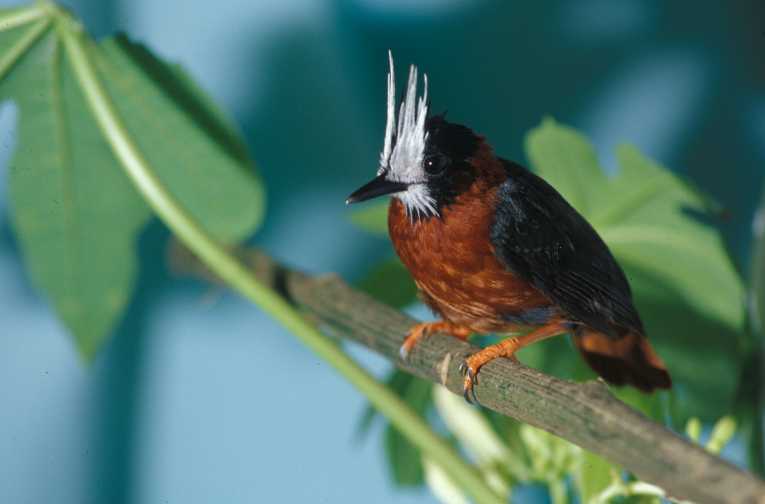Not all of the Amazon's wildlife is left bowed in the timber-logger's wake. A report just out shows many of the brightly colored birds - found in the tropical forest's under-story - can bounce back from 'local extinction'. That is if they are given enough time - and if enough fragments of remaining forest are spared the ax.
That could be a great boon for those seeking to repair the damaged ecology of swathes of Amazonian rainforests, deforested over the last few decades. The study was put online on PLoS ONE (Public Library of Science) yesterday.
The parts of the rainforest being looked at, around Manaus in Brazil, were cleared during the 1980's to make way for cattle. Government policies at the time insisted that a portion of the forest must be left intact. So timber-cutters left a series of forested 'islands', amongst the pasture-lands, from 2 to 250 acres in size.
Initial surveys of these deforested areas, taken back in 1985, drew a blank when it came to many tropical birds, - such as the White-plumed Antbird. That led scientists to conclude they had disappeared permanently from those areas - and had suffered a 'local extinction'.
But a international collaboration - between Projeto Dinamica Biologica de Fragmentos Florestais, Instituto Nacional de Pesquisas da Amazonia and the Smithsonian Tropical Research Institute - has followed the fortunes of these areas over the last 25 years; and the picture is not as bleak as at first feared.
Surveys conducted in 1985 and 1992 did indeed reveal plummeting bird numbers, with up to 70% lost from the smallest slices of forest. But those losses have reversed in the last two surveys, taken in 2000 and 2007. Most areas have now seen a return of bird species that were previously thought of as lost - especially those where the farmers have moved on.
Lead author Philip Stouffer, a Louisiana State University ornithologist, said that 'although a small subset of species is extremely vulnerable to fragmentation and predictably goes extinct, developing second-growth forest around fragments encourages recolonization.'
Given that rates of deforestation in the Amazon have started rising again, after a recent fall, it is important to bear in mind that conservation - after the loss of primary habitat such as rainforest - is not necessarily a lost cause for all species living there. 'Our samples are snapshots in time,' said Stouffer. 'They show that forest fragments have the potential to recover their biodiversity if they're in a landscape that can rebound. They're not doomed.'
Top Image: White-plumed Antbird (Pithys albifrons) Credit: Francisco Enriquez/NBII Image Gallery










